Whether you’re a seasoned chef or new to the kitchen, knowing how to cook lentils on the stovetop is essential! This guide will teach you about these small-yet-flavorful legumes, from measuring and cooking to storage and seasoning. Learn tips for the Instant Pot and slow cooker too!
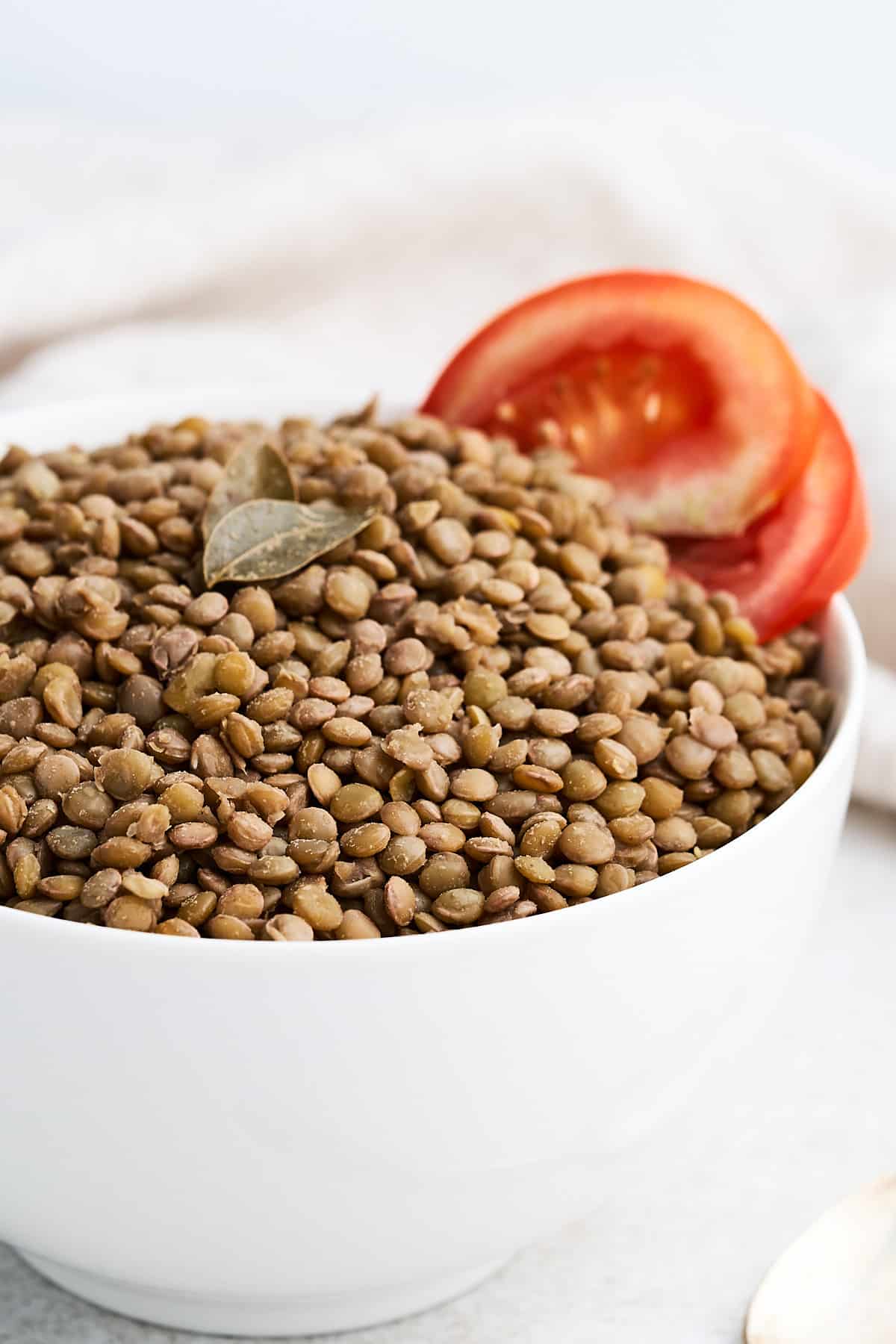
What are lentils?
Lentils are a type of legume and a staple in South Asian, West Asian, Mediterranean, and North African cuisines. They can be found in many dishes, from lentil dal and Thai curry to vegetarian shepherd’s pie and vegan haggis.
Besides their culinary versatility, lentils are a nutritional powerhouse! They’re packed to the brim with plant-based protein and fiber. Plus, they’re incredibly inexpensive and store well, making them a no-brainer for all your vegetarian cooking needs!
For more information and tips on buying, storing, and cooking, visit our detailed legumes guide, or explore all the different types of lentils!
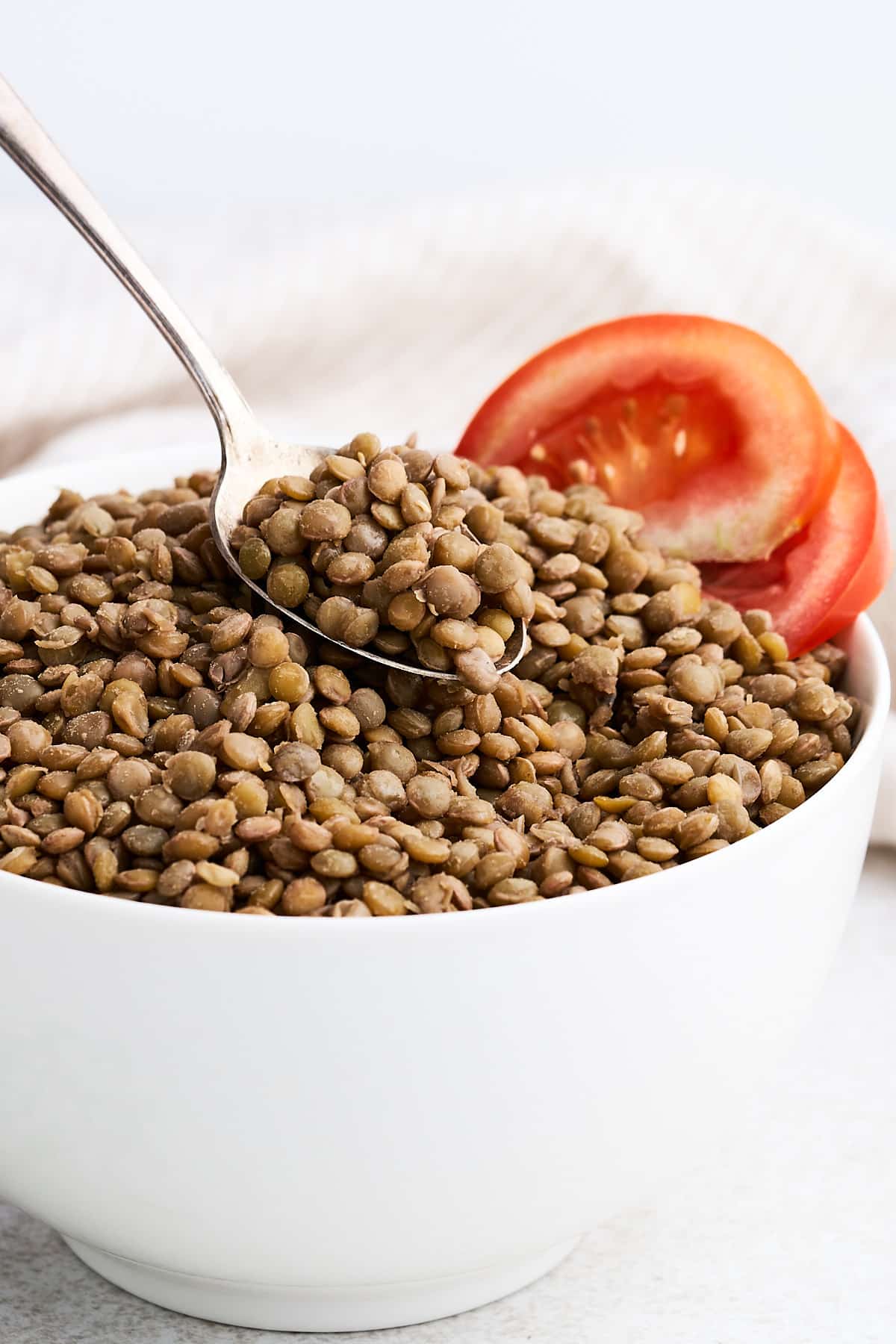
Types of lentils
Unlike other legumes, lentils come in various colors, like green, brown, red, and even black. Each has its own unique flavor and cooking time, so here is a quick breakdown:
- Brown lentils: These are the most common type, holding their shape nicely after cooking. For this reason, they’re often used in stews and soups.
- Green lentils: Slightly peppery in flavor, green lentils retain their shape well when cooked and are perfect for salads and side dishes.
- French green lentils (Puy): Originating from the Puy region in France, French green lentils have a peppery taste and firm texture. They’re commonly used in gourmet dishes.
- Red and yellow lentils: These lentils are split and cook quickly, often turning soft and mushy, making them ideal for soups or South Asian dishes like dal.
- Black lentils (Beluga): Tiny and black, black lentils resemble caviar and have an earthy flavor. They’re often used in salads since they maintain their shape after cooking.
- White lentils: These are black lentils that have been hulled and split, and they play a crucial role in Indian cuisine, especially in making papadums.
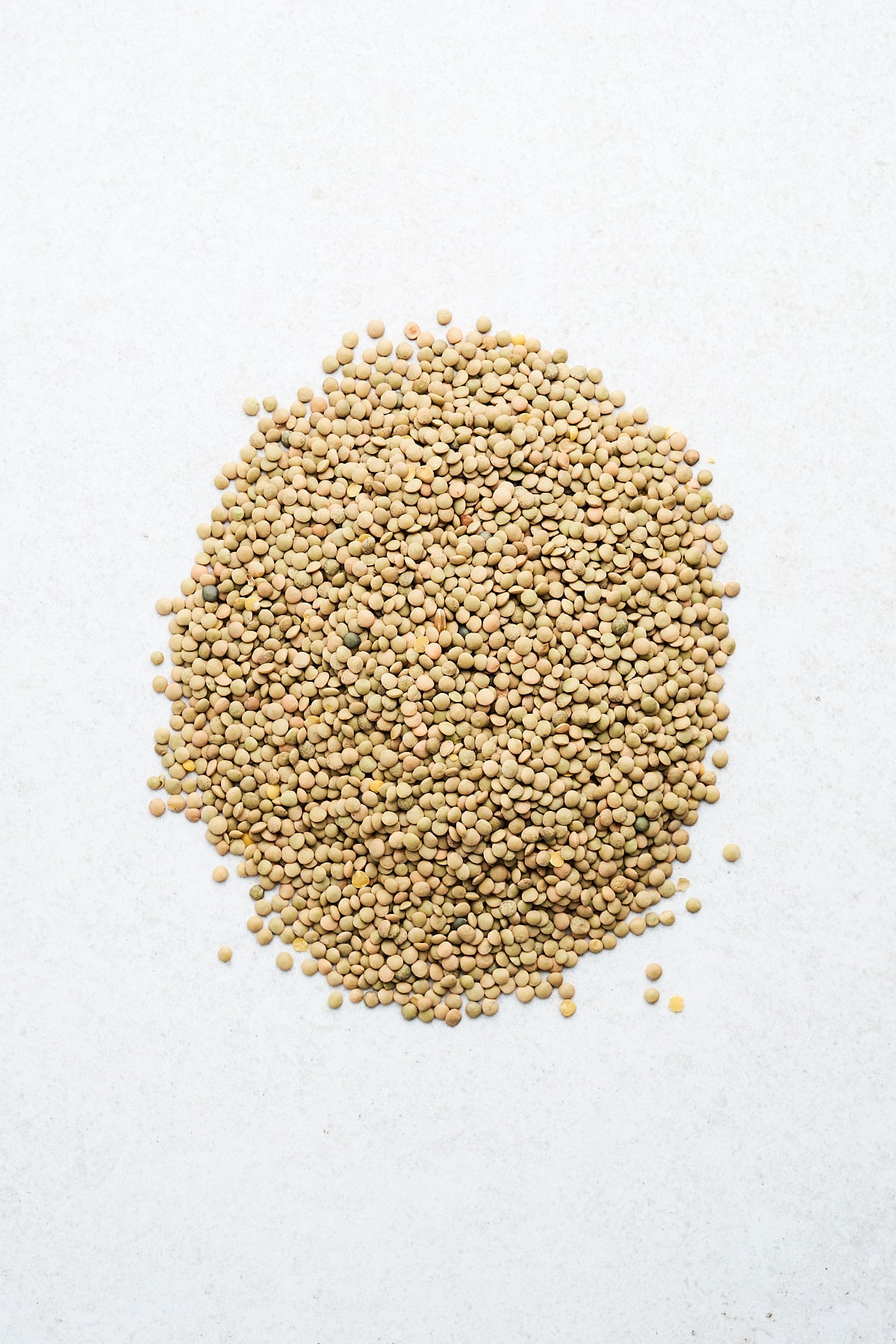
Dried to cooked Lentil measurements
We’re focusing on cooking lentils from their dried form, as they offer a richer taste and texture compared to canned versions. Since they expand during cooking, here’s a handy conversion guide to keep in mind before starting:
- 1 cup of dried lentils = 2 ½ cups of cooked lentils
- ⅓ cup of dried lentils = ⅞ cup of cooked lentils
- 1 pound of dried lentils = About 2 ¼ cups dried lentils
- 1 pound of dried lentils = About 5 ½ cups of cooked lentils
How to cook lentils
Onto the most exciting part — cooking! Follow these detailed steps on how to cook lentils to ensure they turn out perfectly every time.
Rinse the lentils
Lentils don’t require soaking like other legumes, but you should sort and rinse them. Discard any discolored lentils, pebbles, or other foreign materials. Rinse them under cold water in a fine-mesh strainer, then allow them to drain.
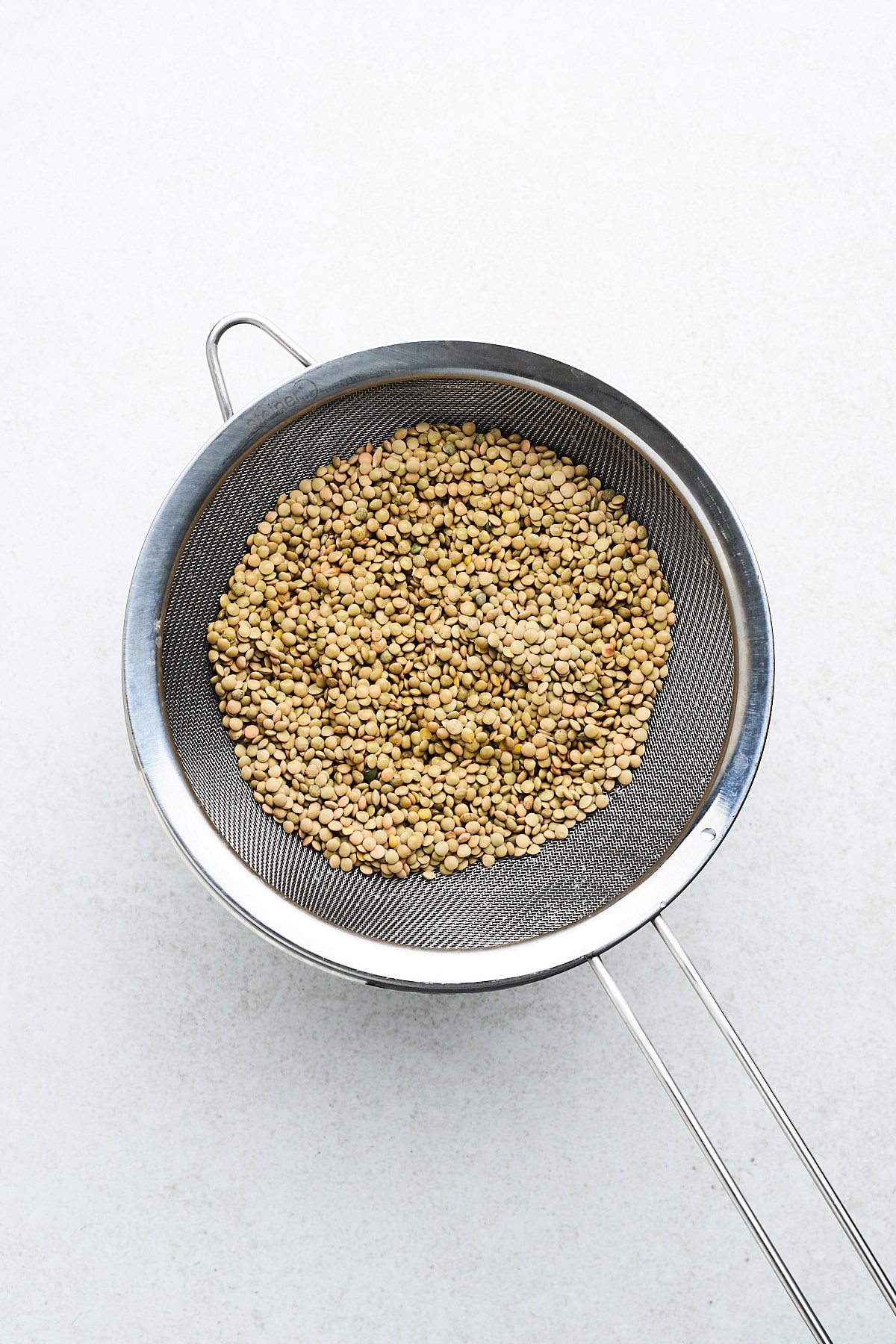
Cook the lentils
In a pot, combine the lentils and water in a 3:1 ratio. You can also add aromatics like bay leaves, garlic, or a rosemary sprig if you like. Bring the mixture to a boil, then cover the pot and reduce it to a simmer.
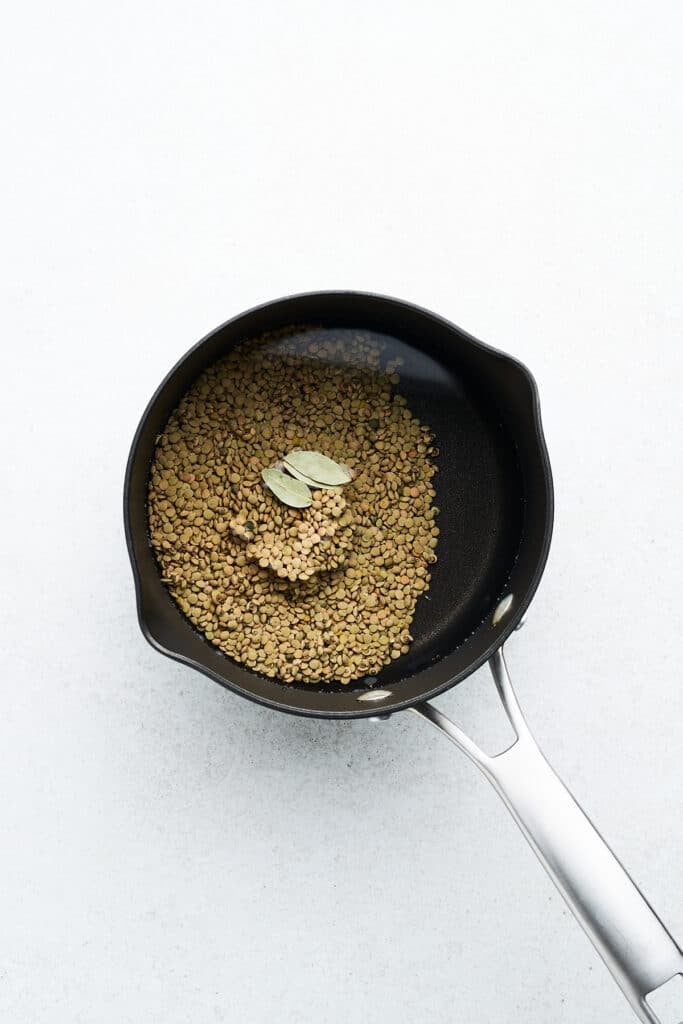
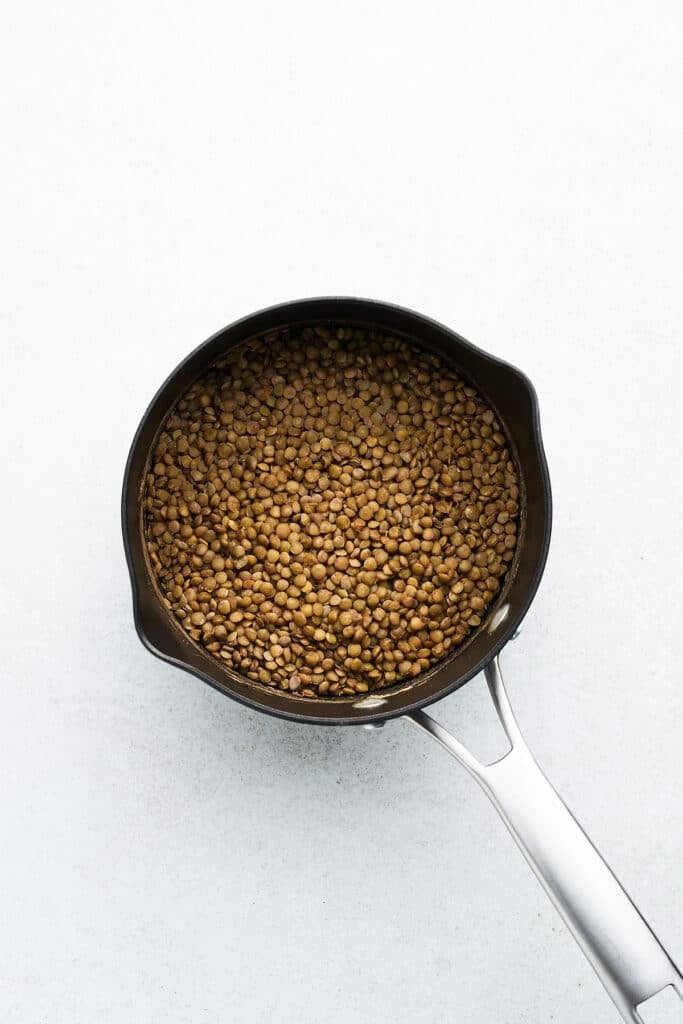
Cook the lentils until they’re tender, which typically takes about 20-25 minutes for green and brown varieties. Remember, add salt and other seasonings after cooking them since it can make them tough if added beforehand.
Other Methods of Cooking Lentils
While we love the stovetop method, you can also use an instant pot or slow cooker!
Instant Pot
Place the sorted and rinsed lentils into your Instant Pot. Add water at a 2:1 ratio and any aromatics. Close the lid and ensure the pressure valve is sealed. Cook them on high for 9-12 minutes. Let the pressure naturally release for 10 minutes before venting.
Slow cooker
Place the lentils in a slow cooker, adding aromatics and water at a 3:1 ratio. Cook them on high for 2-3 hours or low for 4-6 hours.
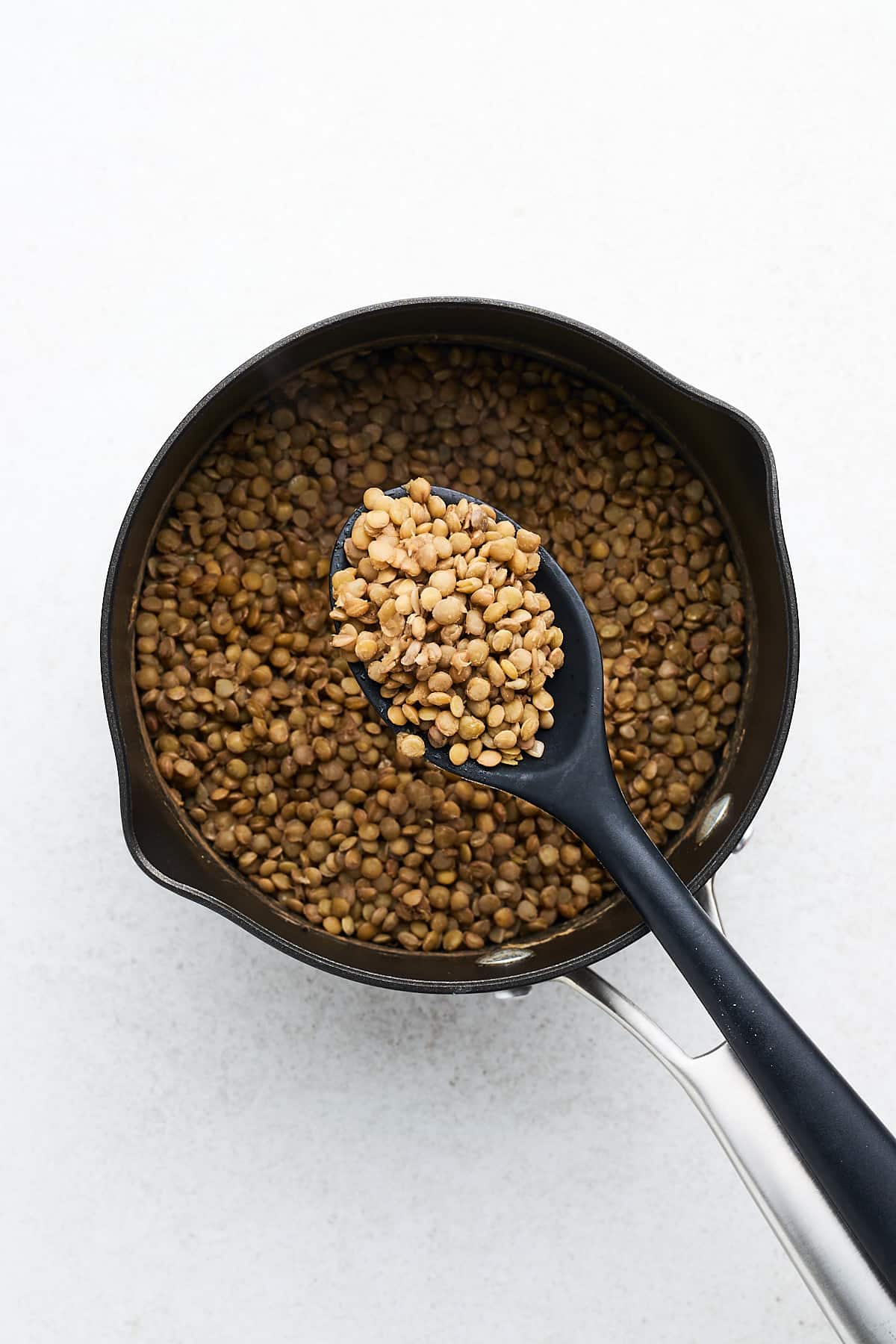
Tips for cooking lentils
- Test for doneness: Lentils should be tender but not mushy. Always taste-test a few before ending the cooking process.
- Check the age: Older lentils take longer to cook. If you’ve had a bag of lentils in your pantry for a while, be prepared to increase the cooking time.
- Acidic ingredients: Ingredients like tomatoes or lemon juice can increase cooking times for lentils. If you’re adding these, it’s best to do so when the lentils are nearly done.
- Consistent sizes: When shopping for lentils, try to choose packages where the lentils are mostly the same size. This will ensure even cooking.
- Cooking for salads vs. soups: If you’re preparing lentils for a salad, they should be on the firmer side. For soups or stews, a softer texture is ideal.
- Cool before storing: If you’re storing cooked lentils, let them cool to room temperature before placing them in the refrigerator. This will prevent them from becoming overly soft.
- Salting timing: Some chefs believe adding salt at the beginning can make lentils tough. While this is debated, I recommend adding salt just before they’re done.
Flavor variations
- Herbs: Fresh or dried rosemary, thyme, and bay leaves will all elevate the flavor.
- Spices: Turmeric, cumin, or paprika can impart unique flavors to the final dish.
- Vegetables: Onion, garlic, and tomatoes can be sautéed and added toward the end of cooking for a richer base.
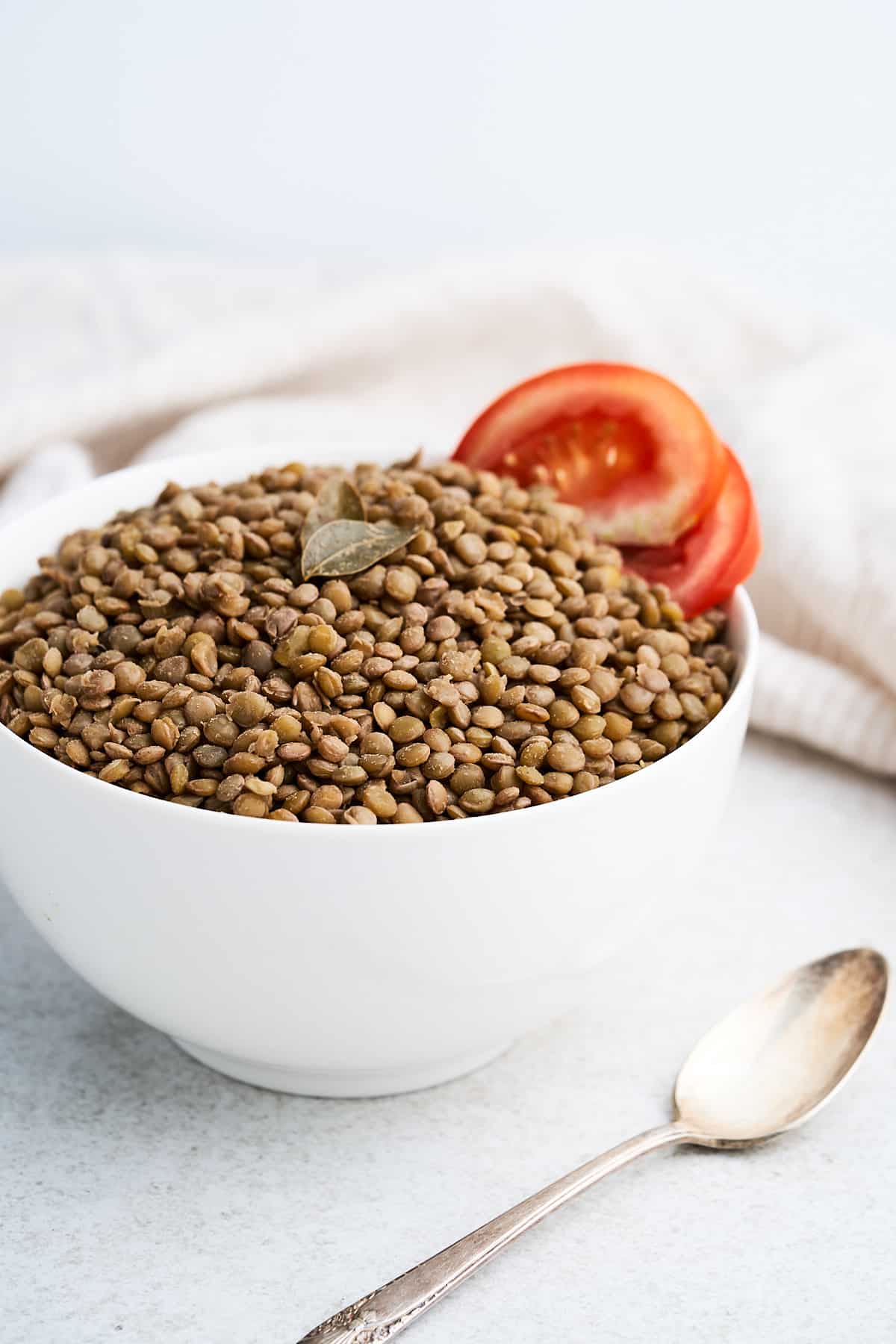
Storing & reheating
Lentils store well, making them perfect for meal prep! Just follow these simple tips:
- Fridge: Once completely cooled, store cooked lentils in an airtight container for up to a week.
- Freezer: You can freeze any leftovers in an airtight container for up to 6 months.
- Reheating: When you’re ready to eat again, reheat them on the stovetop or microwave until warmed through.
How to use lentils
Lentils are a fantastic addition to so many dishes, offering a punch of plant-powered protein and fiber. Here are some of my favorite ideas:
- Persian Noodle Soup
- Vegan Haggis
- Vegan Lentil Chili
- Vegan Sloppy Joes (with lentils instead of TVP)
- Vegetarian Meatloaf (with lentils instead of Impossible “meat”)
- Madras Lentil (a copycat of the Tasty Bite lentil pouches everyone loves!)
Lentil FAQs
Each method has its perks. The stovetop method is the most accessible around the world. When it comes to the most hands-off method, both the Instant Pot and slow cooker are popular choices for many. It just depends on your needs!
Unlike other legumes, lentils don’t require any soaking. However, it’s best to give them a quick rinse and take a look to ensure they are free from dirt or debris.
Yes, dried lentils offer a better texture and flavor than their canned counterparts. Once you try them, it’s hard to go back!
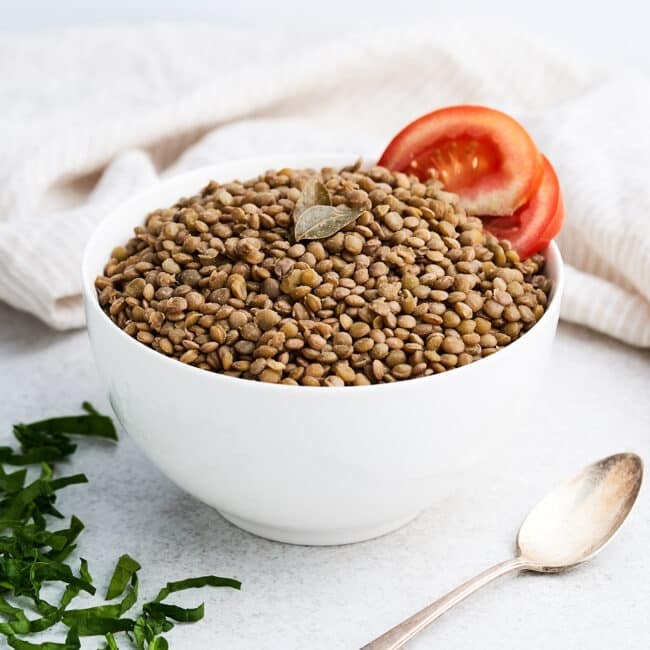
Ingredients
- 1 cup lentils dry
- 3 cups water
Instructions
- Sort: Spread lentils out on a plate so you can see them all, discarding any that are discolored, as well as any pebbles or other debris.
- Rinse: Place the lentils in a fine-mesh strainer and rinse them thoroughly under cold water, allowing them to drain afterward.
- Flavor: In a pot, combine the lentils with water. To enhance the flavor, add aromatics like bay leaves, garlic, or a sprig of rosemary.
- Cook: Bring the lentil mixture to a boil on the stovetop. Once boiling, cover the pot and reduce the heat to a simmer for 20-30 minutes for green, brown, and black varieties. For red and yellow lentils, cook for 8-9 minutes.
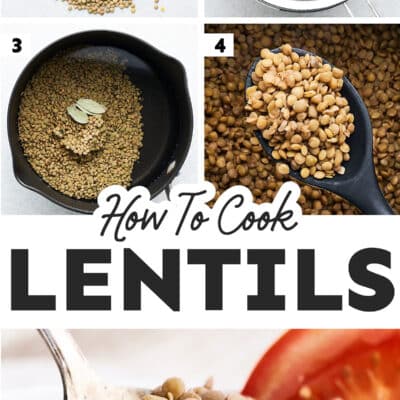


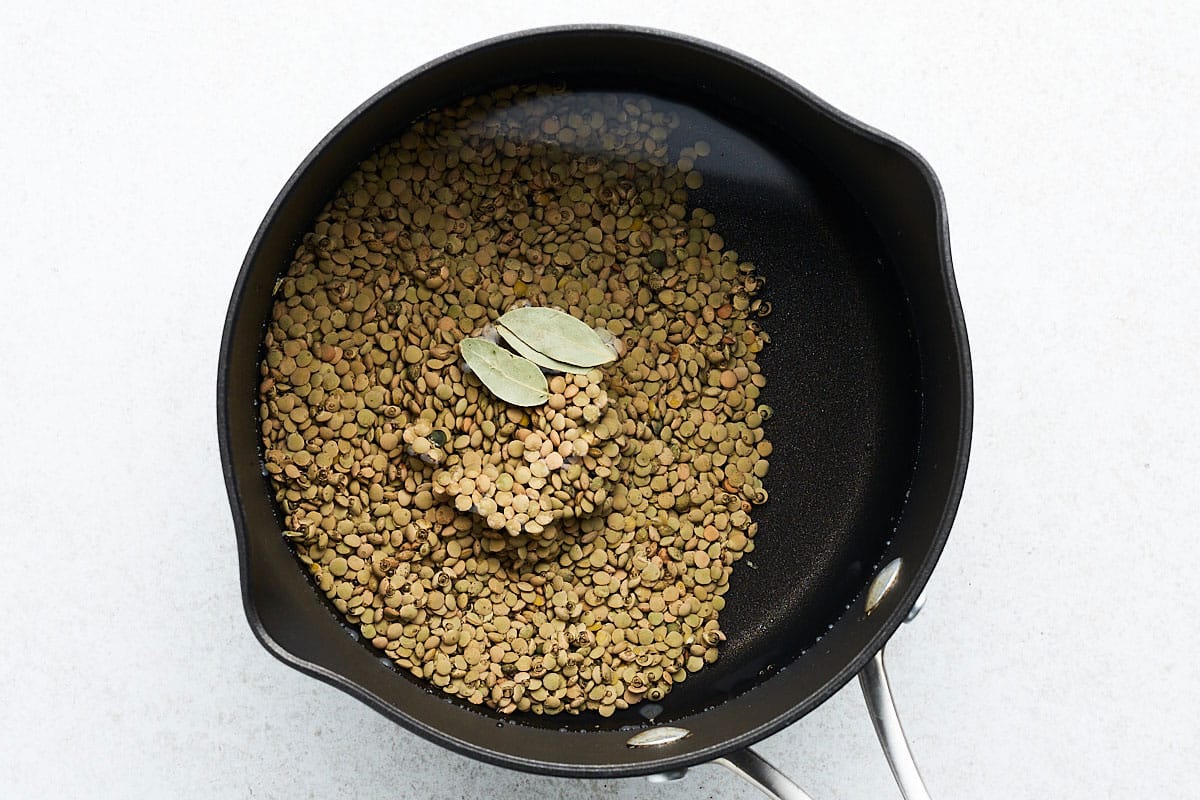

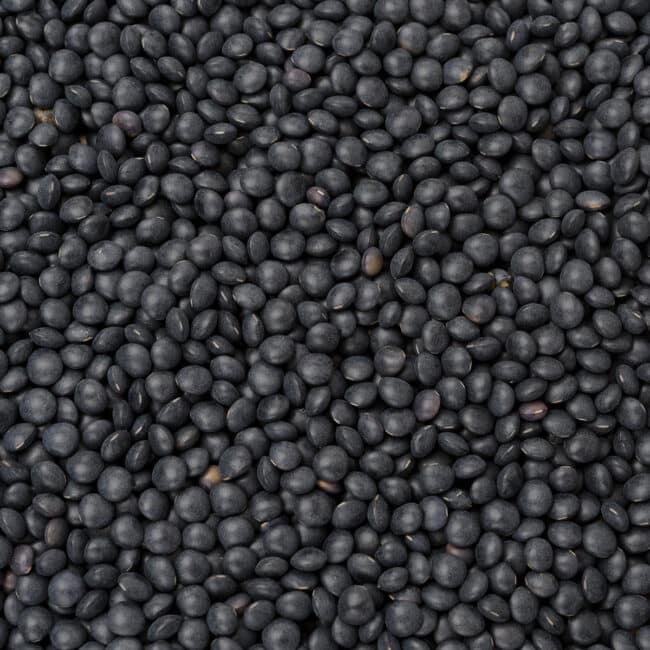
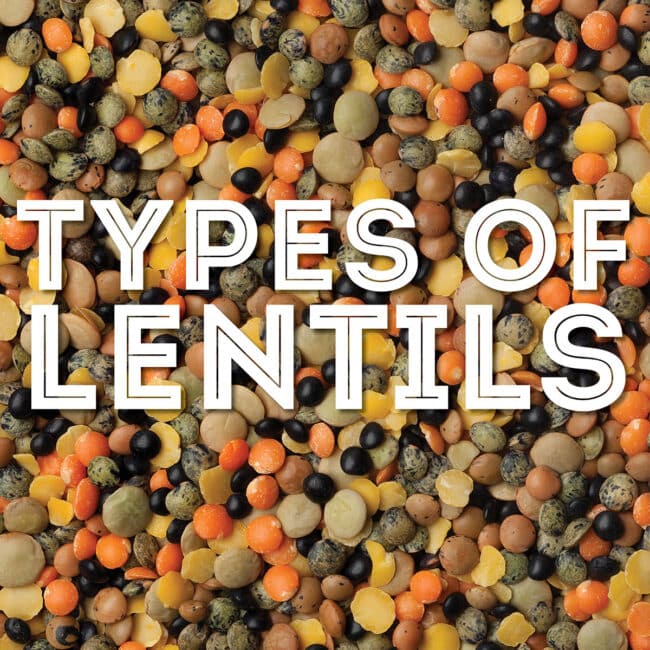

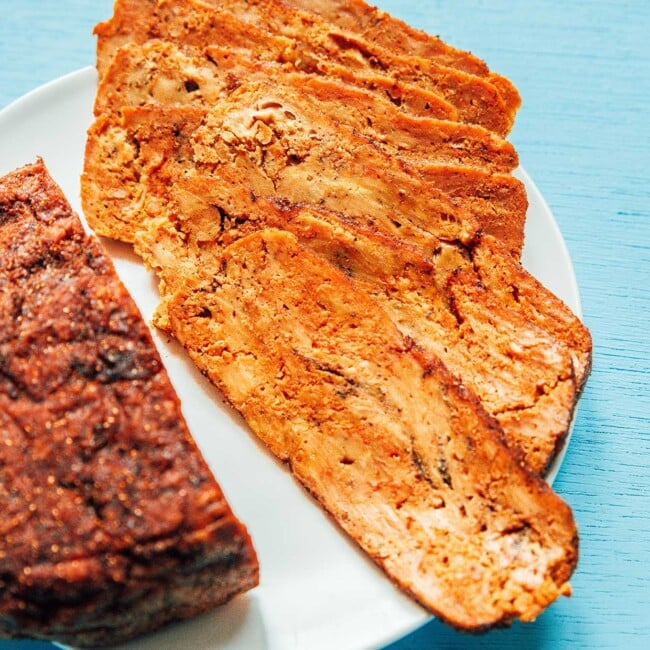
Leave a Comment